Planning to travel to Australia but feeling overwhelmed? SIXT.VN understands the excitement and potential challenges of organizing a trip to the Land Down Under. We are here to provide a solution. Let us guide you through creating your dream itinerary, ensuring a smooth and unforgettable adventure and experience Australia holidays.
1. Why is Planning Crucial for Traveling Australia?
Australia, a vast and diverse continent, offers a plethora of experiences, from iconic landmarks to hidden gems. Planning is crucial for your Australia travel to make the most of your time and resources.
1.1 Overcoming the Challenges
Many travelers face challenges when planning a trip to Australia.
- Vast Distances: Australia is huge, and travel times between destinations can be significant.
- Diverse Climate: Australia’s climate varies widely, from tropical in the north to temperate in the south.
- Accommodation and Transportation: Booking accommodations and transportation can be daunting, especially during peak season.
These challenges can be addressed with proper planning and resources. According to Tourism Australia, planning ahead can save up to 30% on travel costs.
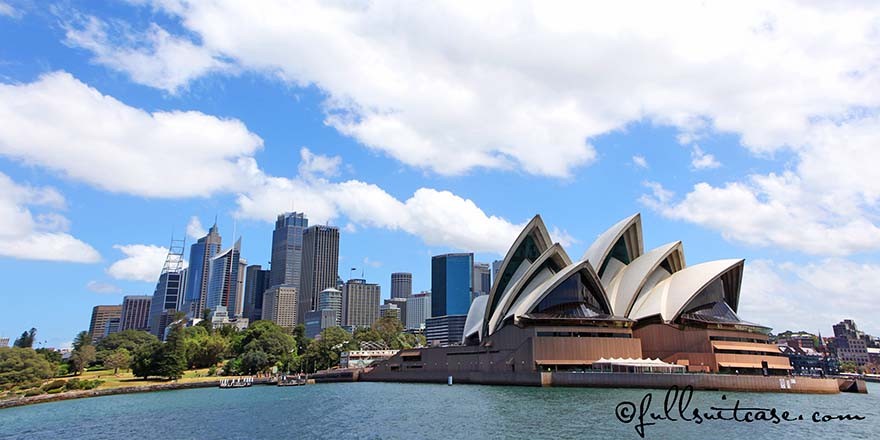 Sydney Opera House and Harbour as seen from the water
Sydney Opera House and Harbour as seen from the water
1.2 Benefits of a Well-Planned Trip
A well-planned trip offers numerous benefits.
- Maximizing Time: Planning ensures you see the best of Australia within your timeframe.
- Budget Control: A detailed itinerary helps you manage expenses effectively.
- Stress Reduction: Knowing your schedule and arrangements reduces anxiety.
- Enhanced Experience: A planned trip allows you to delve deeper into the culture and attractions.
According to a study by the University of Queensland, travelers who plan their trips thoroughly report higher satisfaction levels.
2. Understanding Your Travel Style and Interests
Identifying your interests is the first step in planning your Australian adventure.
2.1 Identifying Your Interests
Consider what excites you most about Australia.
- Nature and Wildlife: Are you passionate about exploring national parks and encountering unique animals?
- City Life and Culture: Do you prefer vibrant cities, museums, and cultural events?
- Adventure Activities: Are you interested in hiking, surfing, diving, or other outdoor adventures?
- Relaxation and Beaches: Do you dream of lounging on pristine beaches and enjoying the sun?
- Food and Wine: Are you eager to sample local cuisine and explore wine regions?
2.2 Involving Everyone
If traveling with family or friends, involve everyone in the planning process to ensure a memorable experience for all. According to research from Griffith University in 2018, collaborative trip planning significantly increases overall satisfaction.
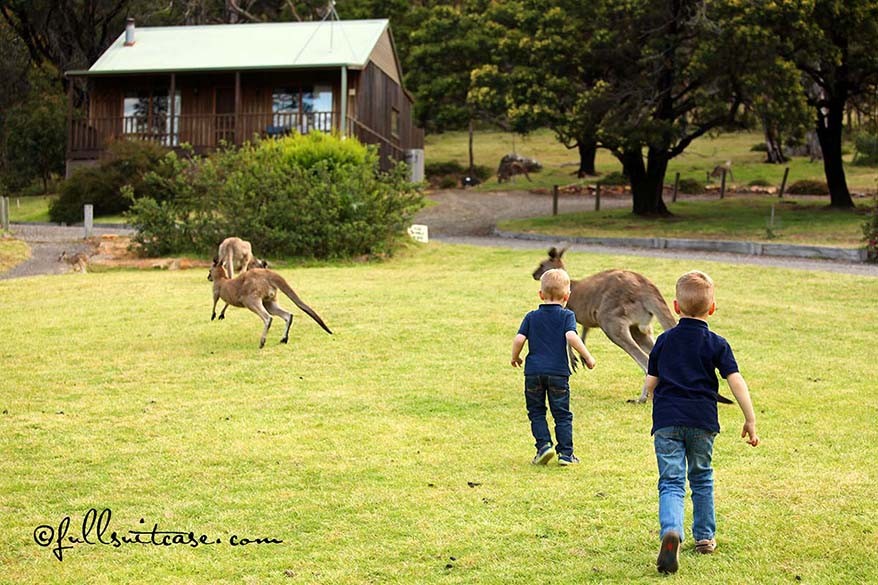 Children chasing wild kangaroos in the Grampians NP Australia
Children chasing wild kangaroos in the Grampians NP Australia
2.3 Defining Your Travel Priorities
List your must-see attractions and activities to guide your itinerary. This approach ensures that your trip aligns with your personal preferences and goals.
3. Choosing the Right Time to Visit
Australia’s seasons are opposite to those in the Northern Hemisphere, and the best time to visit depends on your chosen destination and activities.
3.1 Seasonal Guide
- Summer (December to February): Ideal for Tasmania, southern coastal regions, and beaches.
- Autumn (March to May): Great for visiting wine regions and enjoying milder temperatures.
- Winter (June to August): Best for exploring the tropics in northern Australia, such as Darwin and Queensland.
- Spring (September to November): Perfect for wildflowers in Western Australia and exploring cities like Sydney and Melbourne.
| Region | Best Time to Visit | Activities |
|---|---|---|
| Northern Territory (Darwin) | May to October | Dry season, ideal for outdoor adventures |
| Tasmania | November to March | Summer, perfect for hiking and coastal exploration |
| Queensland | May to October | Warm and dry, best for the Great Barrier Reef |
| Western Australia (Perth) | Spring and Autumn | Mild temperatures, great for exploring |
3.2 Avoiding Peak Seasons
Consider traveling during the shoulder seasons (spring and autumn) to avoid crowds and higher prices. According to data from the Australian Bureau of Statistics, traveling in the shoulder seasons can reduce costs by up to 20%.
3.3 Weather Considerations
Research the specific weather conditions for your chosen destinations to pack appropriately and plan activities accordingly. This research will help you avoid unexpected disruptions to your travel plans.
4. Determining the Length of Your Trip
The amount of time you have significantly impacts your itinerary.
4.1 Prioritizing Destinations
With limited time, focus on a few key regions rather than trying to see everything.
4.2 Regional Focus
- One Week: Focus on a specific region, such as Sydney and its surroundings, or the Great Barrier Reef.
- Two Weeks: Combine two regions, such as Sydney and Melbourne, or the Great Barrier Reef and the Daintree Rainforest.
- Three Weeks or More: Explore multiple regions and diverse landscapes, such as a coastal road trip or a visit to the Outback.
4.3 Efficient Transportation
Consider domestic flights to save time and maximize your sightseeing opportunities. According to a 2022 report by the Bureau of Infrastructure, Transport and Regional Economics (BITRE), domestic flights are often more cost-effective than long drives.
5. Must-See Destinations in Australia
Australia boasts a variety of iconic and unique destinations.
5.1 Iconic Landmarks
- Sydney: The Sydney Opera House, Harbour Bridge, and Bondi Beach are must-see attractions.
- Great Barrier Reef: The world’s largest coral reef system offers unparalleled snorkeling and diving opportunities.
- Uluru (Ayers Rock): A sacred Aboriginal site and stunning natural wonder in the Red Centre.
- Great Ocean Road: A scenic coastal drive with breathtaking views and charming towns.
| Destination | Key Attractions | Activities |
|---|---|---|
| Sydney | Opera House, Harbour Bridge, Bondi Beach | Sightseeing, surfing, dining |
| Great Barrier Reef | Coral reefs, diverse marine life | Snorkeling, diving, boat tours |
| Uluru | Ayers Rock, Kata Tjuta, Aboriginal culture | Cultural tours, hiking, sunrise/sunset viewing |
| Great Ocean Road | Twelve Apostles, coastal scenery, charming towns | Scenic drives, hiking, beach visits |
| Melbourne | Culture Capital, gardens, laneways, Yarra River. | Sightseeing, café hopping, nightlife, sporting events. |
| Perth | Beautiful beaches, wineries and restaurants, Rottnest Island Quokka | Wildlife spotting, wine tours, beach activities |
| Tasmania | Nature, hiking, unique history | Bush Walking, adventure tours, historical sight seeing. |
| Darwin | Crocodiles, Waterfalls, aboriginal experiences. | National Parks, fishing and swimming. |
5.2 Natural Wonders
- Kakadu National Park: A UNESCO World Heritage Site with diverse ecosystems and Aboriginal rock art.
- Daintree Rainforest: The oldest tropical rainforest on Earth, offering unique wildlife and lush scenery.
- Kangaroo Island: Home to kangaroos, koalas, seals, and other native animals in their natural habitat.
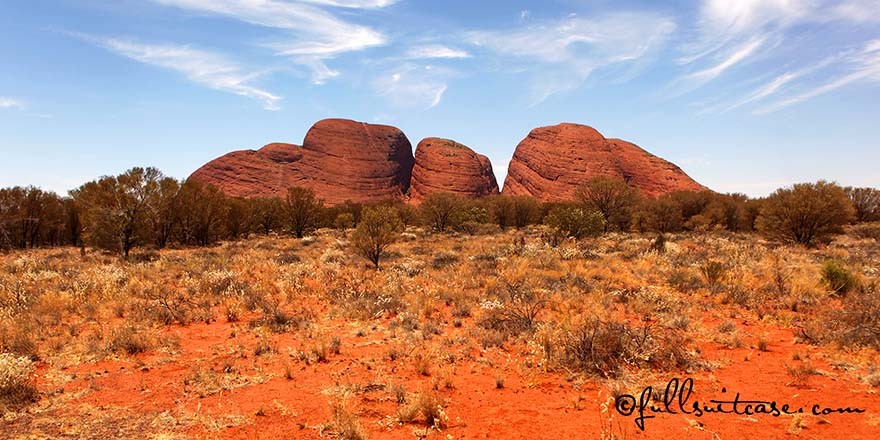 Beautiful red rocks of Kata Tjuta, also called the Olgas in Australian outback
Beautiful red rocks of Kata Tjuta, also called the Olgas in Australian outback
5.3 Cultural Experiences
- Aboriginal Cultural Tours: Learn about the history and traditions of Australia’s Indigenous people.
- Museums and Galleries: Explore Australia’s art, history, and culture in cities like Sydney and Melbourne.
- Wine Regions: Visit renowned wine regions like the Barossa Valley and Margaret River for tastings and tours.
6. Creating a Detailed Itinerary
A detailed itinerary is essential for a smooth and enjoyable trip.
6.1 Daily Activities
Outline your daily activities, including transportation, accommodation, and planned tours or excursions.
6.2 Flexible Planning
Allow for flexibility in your itinerary to accommodate unexpected delays or spontaneous adventures.
6.3 Sample Itinerary: Two Weeks in Eastern Australia
Day 1-3: Sydney
- Visit the Sydney Opera House and Harbour Bridge.
- Relax on Bondi Beach and take a surf lesson.
- Explore the Rocks district and enjoy a harbor cruise.
Day 4-7: Great Barrier Reef (Cairns)
- Fly to Cairns and take a snorkeling or diving tour of the Great Barrier Reef.
- Visit the Daintree Rainforest and explore its unique ecosystem.
- Relax on Palm Cove and enjoy the tropical atmosphere.
Day 8-10: Melbourne
- Fly to Melbourne and explore the city’s laneways and street art.
- Visit the National Gallery of Victoria and Federation Square.
- Take a day trip to the Yarra Valley wine region.
Day 11-14: Great Ocean Road
- Rent a car and drive the Great Ocean Road.
- Visit the Twelve Apostles and Loch Ard Gorge.
- Explore the charming towns of Lorne and Apollo Bay.
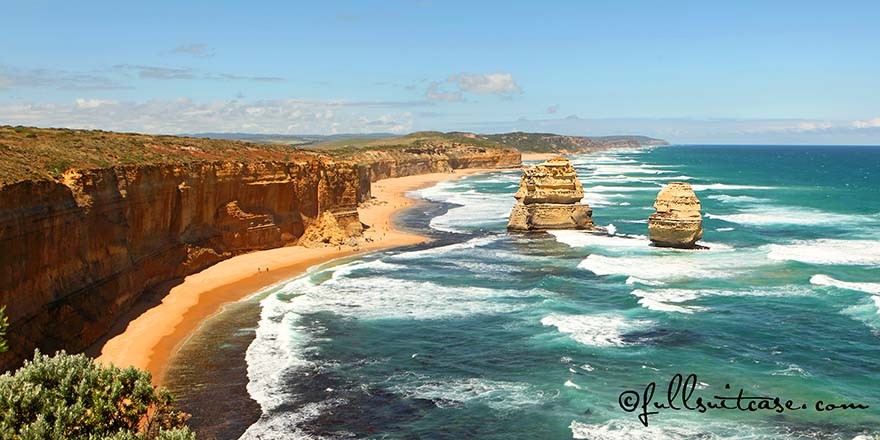 The Great Ocean Road coastline near the Twelve Apostles Australia
The Great Ocean Road coastline near the Twelve Apostles Australia
7. Booking Accommodation and Transportation
Advance bookings are essential, especially during peak season.
7.1 Accommodation Options
- Hotels: Wide range of options, from budget-friendly to luxury.
- Apartments: Great for families or longer stays.
- Hostels: Budget-friendly and social option for solo travelers.
- Airbnb: Unique local experiences with diverse options.
7.2 Transportation Choices
- Flights: Essential for covering long distances quickly.
- Rental Cars: Ideal for exploring regions at your own pace.
- Trains: Comfortable and scenic option for traveling between cities.
- Buses: Affordable option for budget travelers.
7.3 Booking Tips
- Book flights and accommodation well in advance to secure the best deals.
- Compare prices and read reviews before making a reservation.
- Consider purchasing a travel pass for cost-effective transportation.
8. Budgeting for Your Trip
Creating a budget is crucial for managing your expenses.
8.1 Expense Categories
- Flights: International and domestic flights.
- Accommodation: Hotels, apartments, hostels, or Airbnb.
- Transportation: Rental cars, trains, buses, or public transport.
- Activities: Tours, entrance fees, and entertainment.
- Food: Restaurants, groceries, and snacks.
- Miscellaneous: Travel insurance, visas, souvenirs, and unexpected expenses.
8.2 Cost-Saving Tips
- Travel during the shoulder seasons to avoid peak prices.
- Cook your own meals to save on restaurant costs.
- Take advantage of free activities, such as hiking and visiting parks.
- Look for discounts and deals on tours and attractions.
- Use public transportation to get around cities.
8.3 Creating a Budget Spreadsheet
Create a spreadsheet to track your estimated expenses and actual spending. This tracking ensures you stay within your budget.
9. Packing Essentials
Pack appropriately for Australia’s diverse climate and activities.
9.1 Clothing
- Lightweight and breathable clothing for warm weather.
- Layers for cooler evenings and air-conditioned spaces.
- Swimsuit, sunscreen, and a hat for beach visits.
- Hiking boots for exploring national parks.
- Rain jacket for wet weather.
9.2 Travel Documents
- Passport and visa (if required).
- Flight and accommodation confirmations.
- Travel insurance details.
- Driver’s license (if renting a car).
- Copies of important documents stored separately.
9.3 Health and Safety
- First-aid kit with essential medications.
- Insect repellent for mosquito-prone areas.
- Hand sanitizer and face masks for hygiene.
- Any necessary prescription medications.
10. Staying Connected and Safe
10.1 Communication
- Purchase a local SIM card for affordable data and calls.
- Download useful apps, such as maps, translation, and transportation.
- Inform your bank and mobile provider about your travel dates.
10.2 Safety Tips
- Be aware of your surroundings and avoid walking alone at night.
- Store valuables in a safe place and avoid displaying expensive jewelry.
- Follow local advice and warnings regarding weather conditions and wildlife.
- Learn basic first aid and emergency contact information.
- Swim at patrolled beaches and follow the lifeguard’s instructions.
11. Embracing Local Culture
11.1 Respecting Aboriginal Culture
- Learn about the history and traditions of Australia’s Indigenous people.
- Visit Aboriginal cultural centers and support Indigenous businesses.
- Respect sacred sites and follow local guidelines.
11.2 Etiquette and Customs
- Be polite and respectful in your interactions with locals.
- Tipping is not mandatory but appreciated for good service.
- Dress appropriately when visiting religious sites.
- Be mindful of noise levels in residential areas.
11.3 Learning Basic Phrases
Learning a few basic Australian phrases can enhance your experience.
- “G’day” (good day)
- “Cheers” (thank you)
- “No worries” (it’s okay)
- “Arvo” (afternoon)
12. Booking Tours and Activities with SIXT.VN
SIXT.VN offers a range of services to enhance your trip to Australia.
12.1 Travel Consultation
SIXT.VN provides personalized travel consultation to help you plan your itinerary based on your interests and preferences.
12.2 Airport Transfer
Enjoy a seamless arrival and departure with SIXT.VN’s airport transfer services. This service ensures a stress-free start and end to your trip.
12.3 Hotel Booking
Choose from a wide selection of hotels with SIXT.VN’s hotel booking service, catering to various budgets and preferences.
12.4 Attraction Tickets
Purchase tickets to popular attractions through SIXT.VN, saving time and ensuring access to must-see landmarks.
12.5 Tour Packages
Opt for SIXT.VN’s tour packages for guided experiences and hassle-free exploration of Australia’s highlights. These packages are designed to provide comprehensive and enriching experiences.
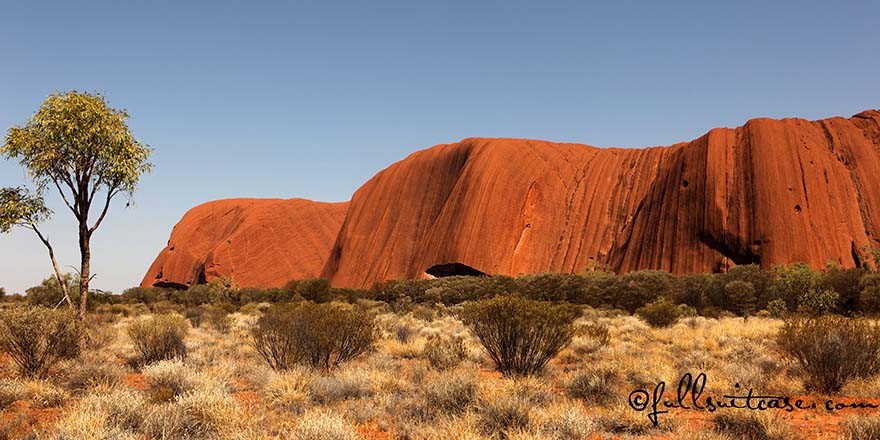 Uluru or Ayers rock from a different perspective
Uluru or Ayers rock from a different perspective
13. Addressing Your Travel Challenges with SIXT.VN
13.1 Customized Itineraries
SIXT.VN crafts personalized itineraries tailored to your interests and time frame, ensuring you see the best of Australia.
13.2 Multilingual Support
SIXT.VN offers multilingual support to assist you with communication and cultural nuances, making your trip smoother.
13.3 Reliable Services
With SIXT.VN, you can rely on trusted and high-quality travel services, ensuring a safe and enjoyable trip. This reliability is a cornerstone of our commitment to customer satisfaction.
13.4 Convenient Booking
SIXT.VN provides a user-friendly booking platform, making it easy to arrange flights, accommodation, and activities.
14. Call to Action: Plan Your Dream Trip with SIXT.VN
Ready to experience the wonders of Australia? Visit SIXT.VN today to explore our comprehensive travel services, including personalized consultations, airport transfers, hotel bookings, attraction tickets, and tour packages. Let SIXT.VN turn your dream of Australia travel into a reality. Contact us at +84 986 244 358 or visit our website at SIXT.VN. Address: 260 Cau Giay, Hanoi, Vietnam.
15. Conclusion: Your Adventure Awaits
With careful planning and the right resources, your trip to Australia will be an unforgettable adventure. From the iconic landmarks of Sydney to the natural wonders of the Great Barrier Reef and the cultural experiences in Melbourne, Australia offers something for every traveler. Let SIXT.VN be your trusted partner in creating the perfect itinerary and ensuring a seamless and enriching travel experience.
FAQ: Frequently Asked Questions About Planning a Trip to Australia
1. What is the best time to visit Australia?
The best time to visit Australia depends on the region. The northern regions are best visited during the dry season (May to October), while the southern regions are ideal during the summer (December to February).
2. How much time do I need to see Australia?
Ideally, you need at least two to three weeks to explore a few key regions in Australia. With more time, you can explore multiple regions and enjoy a more comprehensive experience.
3. What are the must-see destinations in Australia?
Must-see destinations include Sydney, the Great Barrier Reef, Uluru, the Great Ocean Road, and Melbourne.
4. How far in advance should I book flights and accommodations?
It is recommended to book flights and accommodations well in advance, especially during peak season, to secure the best prices and availability.
5. What should I pack for a trip to Australia?
Pack lightweight clothing, swimwear, sunscreen, a hat, hiking boots, and a rain jacket.
6. Do I need a visa to enter Australia?
Most international visitors require a visa to enter Australia. Check the visa requirements based on your nationality before traveling.
7. What is the currency in Australia?
The currency in Australia is the Australian Dollar (AUD).
8. Is it safe to travel to Australia?
Australia is generally a safe country for travelers. However, it is essential to be aware of your surroundings and take precautions against theft and natural hazards.
9. What is the best way to get around Australia?
The best way to get around Australia depends on your itinerary. Domestic flights are ideal for covering long distances, while rental cars are great for exploring regions at your own pace.
10. How can SIXT.VN help me plan my trip to Australia?
SIXT.VN offers personalized travel consultations, airport transfers, hotel bookings, attraction tickets, and tour packages to help you plan and enjoy a seamless trip to Australia.



